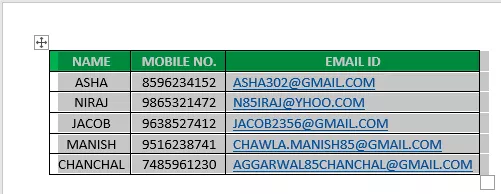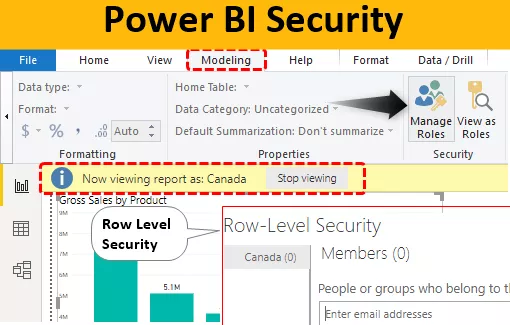Top 6 methoden om hoofdletters in kleine letters te veranderen
Er zijn veel methoden waarmee u de hoofdlettertekst in Excel kunt wijzigen in kleine letters. In deze gids zullen we de 6 beste methoden bekijken om hoofdletters in kleine letters te veranderen.
# 1 Lagere functie gebruiken om van hoofdletter te veranderen in Excel
Er is een ingebouwde functie in MS Excel voor het onthoofden van elk teken in een woord, wat een LAGERE functie is .
Voorbeeld
Stel dat we een lijst hebben met een aantal werkwoorden in Excel, dan willen we het hoofdlettergebruik van tekst veranderen in kleine letters.

Om de hoofdletters / kleine letters te wijzigen, moeten we de functie in cel C2 schrijven als '= LAGER (A2)'. ”= 'Of' + 'teken wordt gebruikt om de functie te schrijven, ' LOWER ' is de functienaam en A2 is de celverwijzing voor de tekst waarvan we de hoofdletter willen wijzigen.

Druk op Enter en deze functie converteert alle letters in een tekstreeks naar kleine letters.

Een waarde wordt nu geconverteerd. Voor andere waarden kunnen we ofwel op Ctrl + D drukken nadat we alle cellen met de bovenste cel hebben geselecteerd, of op Ctrl + C en Ctrl + V drukken om de functie te kopiëren en te plakken. Of we kunnen de formule naar andere cellen slepen om het antwoord te krijgen.

# 2 VBA-opdrachtknop gebruiken
We kunnen een VBA-opdrachtknop maken en de code toewijzen om de volgende tekst in kleine letters te veranderen met de opdrachtknop.

Voorbeeld
Stap 1: Om de opdrachtknop te maken, klikt u op de opdracht 'Invoegen' in de groep 'Besturing' in het 'Ontwikkeltabblad Excel'. En selecteer de 'Command-knop'.

Stap 2: Klik op de werkbladlocatie waar u de opdrachtknop wilt laten verschijnen. We kunnen het formaat van de opdrachtknop wijzigen met de ALT-knop .

Stap 3: Gebruik de opdracht 'Eigenschappen' om de eigenschappen van de opdrachtknop te wijzigen, zoals bijschrift, naam, AutoSize, WordWrap, enz.


Stap 4: Om de code toe te wijzen aan de opdrachtknop, klikt u op de opdracht 'Bekijk code' in de groep 'Besturing' in 'Ontwikkelaar'. Zorg ervoor dat 'Ontwerpmodus' is geactiveerd.

Stap 5: Selecteer in het geopende venster 'ConvertToLowerCase' in de vervolgkeuzelijst.

Stap 6: Plak de volgende code tussen de regels.
Code:
Dim Rng As Range Dim c As Range On Error Hervatten Volgende Set Rng = Selectie voor elke c In Rng c.Value = LCase (c.Value) Volgende c

Stap 7: Verlaat de visuele basiseditor. Zorg ervoor dat het bestand wordt opgeslagen met de extensie .xlsm, aangezien we een macro in onze werkmap hebben.
Stap 8: Schakel 'Ontwerpmodus' uit . Nu, na het selecteren van de vereiste cellen, worden de waarden telkens wanneer we op de opdrachtknop klikken, geconverteerd naar kleine letters.
Selecteer alle waarden van A2: A10 en klik op de opdrachtknop. De tekst wordt gewijzigd in kleine letters.
# 3 VBA-sneltoets gebruiken
Deze manier is vergelijkbaar met de bovenstaande, behalve dat we hier geen opdrachtknop hoeven te maken.
Voorbeeld
Stap 1: Open de Visual Basic-editor via het tabblad 'Ontwikkelaar' of gebruik de Excel-sneltoets (Alt + F11) .

Stap 2: Voeg de module in via Menu invoegen -> Moduleopdracht .

Stap 3: Plak de volgende code.
Sub LowerCaseConversion() Dim Rng As Range Dim c As Range On Error Resume Next Set Rng = Selection For Each c In Rng c.Value = LCase(c.Value) Next c End Sub

Step 4: Save the file using Ctrl+S. Exit the visual basic editor. Make sure the file is saved with .xlsm extension as we have a macro in our workbook.
Step 5: Now choose the ‘Macros’ in the ‘Code’ group in the ‘Developer’ tab.

Step 6: Then click on ‘Options’ and assign the shortcut key to the Macro, and we can write a description as well.

In our case, we have assigned Ctrl+Shift+L.

Step 7: Macro is ready to use. Now to change the values into lowercase, select the required cells, and press Ctrl+Shift+L.
#4 Using Flash Fill
If we establish a pattern by typing the same value in the lowercase in the adjacent column, the Flash Fill feature will fill in the rest for us based on the pattern we provide. Let us understand this with an example.
Example
Suppose we have the following data, which we want to get in lowercase.

To do the same, we need to write the first value of the list in the lower case manually in the adjacent cell.

Come to the next cell in the same column and just press Ctrl+E.


Choose ‘Accept Suggestions’ from the box menu appeared.

That is it. We have all the values in the lower case now. Now we can copy the values, paste the same onto the original list, and delete the extra value from the right.
#5 Enter Text in Lower Case Only
We can make a restriction so that the user can enter text values in lowercase only.
Example
To do this, the steps are:
- Select the cells which you want to restrict.
- Choose ‘Data Validation’ from the ‘Data Tools’ group from the ‘Data’ tab.

- Apply the settings explained in the figure below.


- Now, whenever the user enters the value in capital letters, MS Excel will stop and will show the following message.
#6 Using Microsoft Word
In Microsoft word, unlike Excel, we have a command named ‘Change Case’ in the ‘Font’ group in the ‘Home’ tab.
Example
Suppose we have the following table of data for which we want to change the text case to ‘Lower’ Case.

To change the case, first, we will copy the data from MS Excel and paste it into MS Word. To do the same, the steps are:
Select the data from MS Excel. And press Ctrl+C to copy data from MS Excel.

Open the MS Word application and paste the table using the Ctrl+V shortcut key.

Select the table using the ‘Plus’ sign on the left-top side of the table.

Choose the ‘Change Case’ command from the ‘Font’ group and select ‘lowercase’ from the list.

Now, the data table is converted to ‘Lower.’ We can just copy the table after selecting the ‘Plus’ sign from the left top corner and paste it into Excel back.
We kunnen de oude tabel verwijderen met behulp van het contextmenu, dat we kunnen openen door met de rechtermuisknop op de tafel te klikken.

Dingen om te onthouden
Als we de waarden naar kleine letters willen converteren, moeten we, als we de VBA-code gebruiken (opdrachtknop of sneltoets), het bestand opslaan met de extensie .xlsm omdat we macro's in de werkmap hebben.












